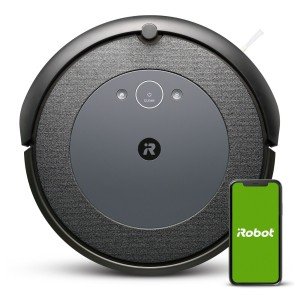The Rise of Robot Vacuum Cleaners in Industrial Settings
In the last few years, the landscape of industrial cleaning has actually seen a substantial transformation with the intro of robot vacuum. These automated gadgets are not just a novelty for homes; they have actually acquired traction in warehouses, making plants, and other industrial environments. This post explores the functionality, benefits, and considerations of robot vacuum cleaners within the industrial context, while responding to some regularly asked questions.
What are Robot Vacuum Cleaners?
Robot vacuum cleaners are automated cleaning devices geared up with advanced sensors and technology that enable them to navigate around areas, detect dirt, and vacuum surface areas without direct human intervention. In industrial settings, they are created to handle a range of particles types, facilitate routine cleaning schedules, and enhance total operational performance.
Table 1: Key Features of Industrial Robot Vacuum Cleaners
| Function | Description |
|---|---|
| Navigation | Utilizes LiDAR or camera-based navigation for accurate mapping. |
| Size and Design | Compact and robust style to suit tight areas and withstand hard environments. |
| Self-Charging | Instantly returns to its docking station for recharging. |
| Dustbin Capacity | Larger dustbin fit for industrial particles sizes and volumes. |
| Programs | Can be programmed for scheduling and particular cleaning tasks. |
| Information Collecting | Geared up with sensing units to gather data for maintenance and cleaning analysis. |
Advantages of Robot Vacuum Cleaners in Industrial Settings
The adoption of robot vacuum comes with a myriad of benefits:
Increased Efficiency:
- 24/7 Operation: Unlike human cleaners, robots can operate all the time, adding to continuous cleanliness without downtime.
- Time-Saving: Automated cleaning enables workers to concentrate on core jobs rather than cleaning duties.
Expense Savings:
- Labor Costs: Maintaining a robot vacuum can lower the requirement for a large cleaning personnel, decreasing general labor expenses.
- Operational Efficiency: With enhanced tidiness and minimized downtime due to upkeep issues, companies can conserve on functional expenses.
Improved Safety:
- Reduced Risk: By reducing the human involvement in harmful cleaning environments, the danger of mishaps is decreased.
- Consistent Cleaning: Robot vacuums guarantee that areas are regularly cleaned up, reducing slip hazards and unhealthy environments.
Increased Flexibility:
- Customizable Cleaning Routes: These devices can be set to tidy particular areas or floorings, adapting to changing industrial layouts.
- Range of Surfaces: Industrial robot vacuums can handle various floor covering types, from concrete to tiles, making them flexible.
Ecological Impact:
- Sustainable Cleaning Solutions: Many models utilize very little water and eco-friendly cleaning options, aiding in corporate sustainability efforts.
Table 2: Industrial Applications of Robot Vacuum Cleaners
| Industry | Application |
|---|---|
| Production | Cleaning assembly line and assembly areas. |
| Warehousing | Maintaining clean and organized storage areas. |
| Food Processing | Guaranteeing tidiness in delicate locations to satisfy health requirements. |
| Pharmaceuticals | Keeping ultra-clean environments for production. |
| Logistics and Distribution | Keeping paths clear for effective operation. |
Challenges and Considerations
While the advantages are significant, companies ought to also consider numerous obstacles:
- Initial Investment: The in advance expenses of purchasing industrial robot vacuum cleaners can be significant, though long-lasting cost savings may offset this cost.
- Repair and maintenance: Regular maintenance is vital to keep the robotic systems working efficiently, and repair work can incur extra costs.
- Combination: Businesses might need to integrate these machines into existing workflows, which can need time and modification.
- Training and Support: Staff may need training to successfully manage these devices, particularly when repairing or shows is required.
Frequently Asked Questions About Robot Vacuum Cleaners in Industrial Settings
1. How much do industrial robot vacuum cleaners cost?
The expense can range from a few thousand to 10s of thousands of dollars, depending on requirements, features, and brand name.
2. What kinds of surfaces can they clean?
Robot vacuum appropriate for various surfaces including carpets, tiles, concrete, and even some wood floorings.
3. How do they browse complicated industrial environments?
A lot of industrial robot vacuums utilize innovative navigation systems like LiDAR, cameras, and sensors to draw up and adapt to their environments for effective cleaning.
4. Can they clean up large areas without human intervention?
Yes, industrial robot vacuums are developed to clean extensive areas with preset paths and schedules, effectively operating autonomously.
5. Are these robots environmentally friendly?
Numerous models prioritize performance and minimize water use, making them a more eco-friendly cleaning choice compared to conventional approaches.
The intro of robot vacuum into industrial environments represents an exceptional improvement in cleaning technology. With automatic cleaning robot to enhance performance, reduce labor costs, and keep safety, these automated systems are leading the way for smarter and cleaner industrial operations. While challenges may exist, redirected here -lasting advantages and technological improvements are motivating for industries looking for to improve their cleaning procedures. As technology continues to evolve, we can expect additional developments in robot vacuum that will change industrial cleaning practices a lot more.

